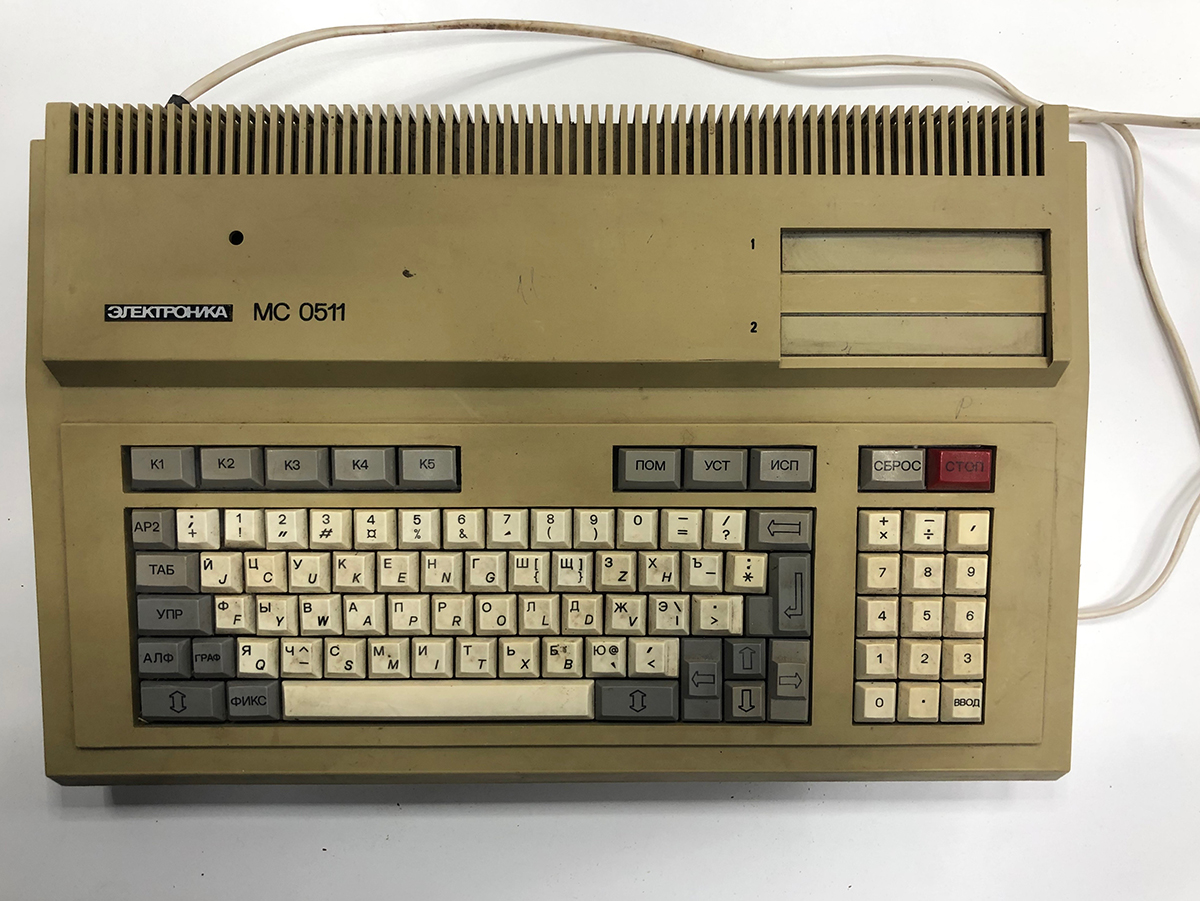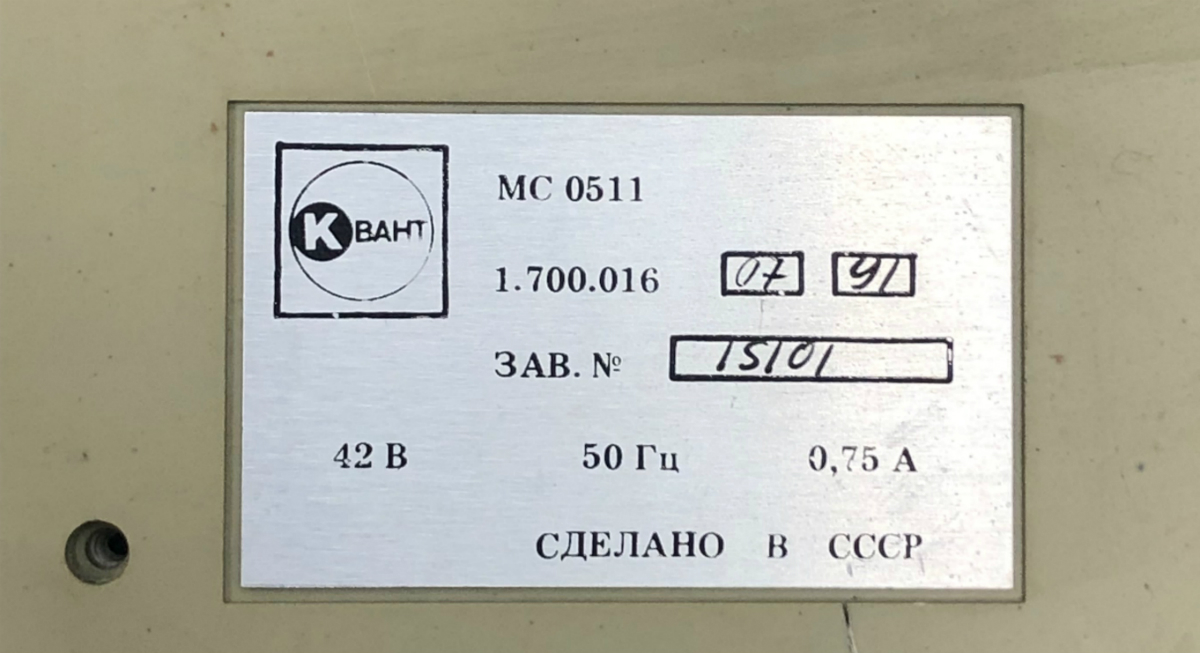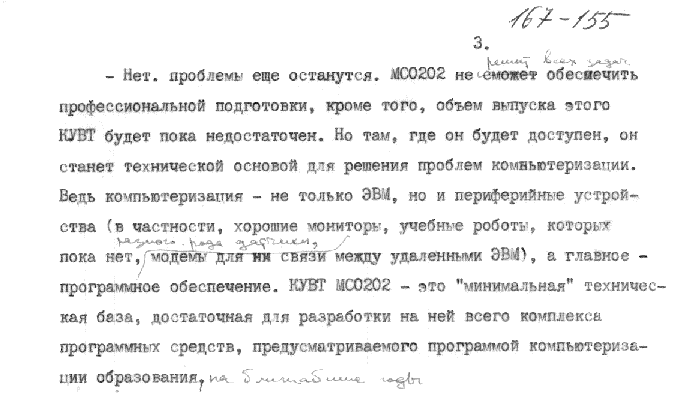Museum DataArt. Unpack "Electronics MS 0511"

We continue to replenish the collection, a new copy arrived in St. Petersburg from the Volga region. Together with Gleb Nitsman , the main ideologist of our museum, we examined the personal microcomputer "Electronics MS 0511" (see the video inside the article) and remembered what it was. Her story continues the theme of computer education in the late USSR, the discussion of which we recently started in the material about Yamaha KUVT2 .
In the history of Soviet computer technology, there were original solutions and our own technological breakthroughs, there were direct borrowing and frank copying. But at certain stages of development, the interaction of technology and society turns out to be almost the most interesting: the principles of the dissemination of special knowledge and the place of IT in the mass consciousness or representation of elites.
A fundamental turning point in relation to computer technology in the USSR occurred in the mid-1980s, when the concept of computer science as an obligatory part of the school curriculum became generally accepted. In many respects, thanks to the efforts of Academician Ershov, the new subject of OIVT (the basics of computer science and computer technology) was distributed throughout the Union, specialized classes equipped with special equipment were introduced. We already talked about the Yamaha KUVT2 PC, but of course, (as they wrote, including in the comments in the article), it was not the only option for a training computer.
In June 6 of the journal "Microprocessor Tools and Systems" for June 1986, an article was published about a new machine developed by Zelenograd NPO Scientific Center - PC "Electronics UK SC".

The development was difficult because the requirements were contradictory. The machine had to be productive, support the ability to program in low and high level languages, work with graphic and text editors, be able to integrate into networks, be reliable enough, but at the same time remain cheap. However, the “Scientific Center” solved the problem, and in 1987 they began to produce personal computers of the SC NC (educational computer of the scientific center) at several factories in different parts of the USSR: in Zelenograd, Svetlogorsk, Chisinau, Tbilisi, Siauliai and Kharkov.
Computers were delivered to schools as part of the KUVT “Electronics MS 0202” complexes, which included a teacher’s car and up to 12 pupils. The machines themselves received the name "Electronics MS 0511", which was supplemented by an index: 01 for student / peripheral or 02 - for teaching / central.
The basis of these machines is the 16-bit KM1801VM2 processor. The circuit also included: 32 Kbytes RAM, 32 Kbytes ROM, keyboard, video processor, 96 Kbytes video RAM, interface for connecting a household tape recorder, sound generator, parallel port, floppy disk interface. Structurally, computers were made in the form of two printed circuit boards: a system board and a keyboard board assembled in a monoblock.

From the documentation for the computer "Electronics MS 0511"
The machine had a command system compatible with the Electronics-80 computer, SM computers, and other PDP-11 architecture machines. To read data using a cassette recorder, a serial telegraph code of the MSX standard was used. As an operating system - Russian-language clones of the DEC OS RT-11: RAFOS, FODOS.
These computers worked out the skills of working with the BASIC languages (in different versions), Pascal, C, RAPIRA (a special development of the Ershov team for school education), Fortran (who by the way turned 55 last week) and some others. In addition, software was developed for editing text and graphic information.
Gleb Nitzman ( gleb_l ) unpacks our copy of “Electronics MS 0511”
Our computer was assembled at the Kvant factory in Zelenograd, where it was developed. The nameplate indicates the assembly time - July 1991 - the last year of the factory production of these machines.

Although the Kvant Zelenograd plant was formally created for the production of printed circuit boards, it actually became the first enterprise to assemble the DCK personal computer (Dialogue-Computing Complexes), and later the UKNC.
The UKSC did not go on sale, they were delivered directly to schools, so there is no mark on the state standard price. The originality of our copy, that is, that it was not redone after its first use at school, is told by computer power of 42 V. At this level, it was apparently kept for security reasons. The monitor has the same voltage, in our case, it also has a wire cut. Therefore, we have to solve the power issue separately - we will deal with the problem and talk about starting the computer.
“Electronics MS 0511” was, in a sense, conceived to eliminate the need to supply PCs for schools from abroad. But the computer developed in Zelenograd could not completely solve the problems - Academician Ershov answered this question of the journal Informatics and Education as follows:

All Articles